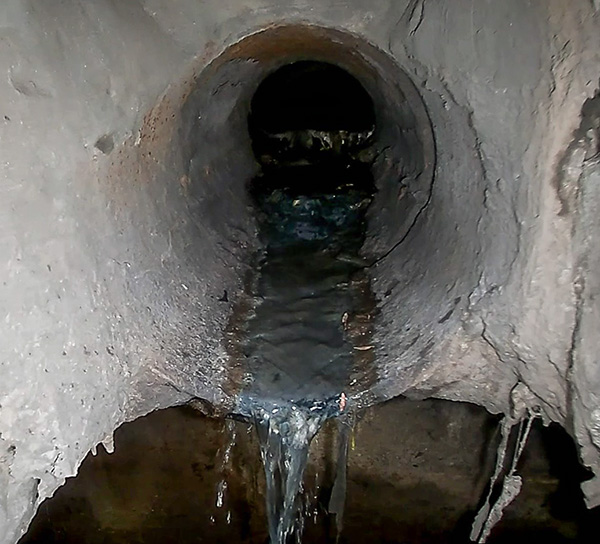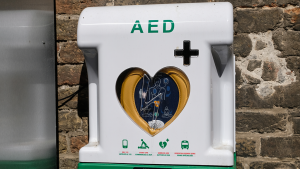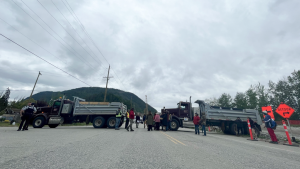The director of Hamilton Water Nick Winters is recommending a risk-based strategy to long-term inspection of Hamilton’s 1,841 kilometres of sewers, with the director suggesting a new type of inspection system may have to be created.
The approach is in contrast to the initial action plan promised by Ontario Minister of Environment, Conservation and Parks (MECP) David Piccini Nov. 24, two days after Hamilton Water staff discovered a 26-year-old misalignment of sewer and storm sewer pipes that has resulted in sewage being funnelled from an east Hamilton neighbourhood into Hamilton Harbour.
Piccini said his ministry would be issuing an order for an audit of the entire sewage system.
“Let’s look at all of the pipes,” he said in one interview.

Hamilton Water has been in contact with the MECP to discuss the scope of future investigations but as of Dec. 2 the city has not been given an order.
“We’re not ready for a recommendation yet,” Winters told the City’s Public Works committee during a meeting Nov. 28.
“It may become a moot point for us to come up with a recommendation if they’re going to require us to do something different. But at a high level, I do believe that the community would be best served if we determine a risk-based approach to inspect our sewer system along with fuller inspection occurring over a longer period of time.”
Hamilton currently investigates three per cent of its sewer pipes using CCTV each year. At that pace it would have taken 19 years to inspect every inch of pipe.
At an accelerated pace of four years, the city would have to assign five staff to the project and it would cost a minimum of $10 million, Winters told the committee.
“This involves creating an inspection program that doesn’t currently exist, and it’s somewhat unusual in municipal wastewater management,” said Winters.
“Every contracted crew would need to have a City of Hamilton staff member accompanying them, seeing what they’re seeing, directing them what to look at, potentially dye-testing and things of that nature.”
There are alternatives, Winters said in an interview.
Among them, Hamilton’s existing water quality sampling program, which is meant to flag infrastructure issues, could be beefed up and repurposed; there could be infrastructure scans; or, Winters said, there could be a program that has not been invented yet.
“What I’m saying is that when I am speaking to our representatives from the MECP here in Hamilton, we need to talk about options and we need to figure out what is the right option.”
The breach was discovered when maintenance staff were working on an unrelated job and uncovered a hole in a combined sewer pipe that allowed sewage to spill into a large storm sewer that discharges into the harbour at Pier 14.
The repair work and realignment of the sewer was completed on Nov. 23 at 9:32 p.m., and all sewage is now flowing into the Western Sanitary Interceptor and all repairs to the combined sewer have been completed.
The city estimates that 337 million litres of sewage discharged into Hamilton Harbour over 26 years.
Four years ago, Hamilton suffered another notorious spill. A four-year, 24-billion-litre sewage leaked into Chedoke Creek, leading to pollution charges.
MECP spokesperson Gary Wheeler explained last week the ministry is expecting the city to conduct a comprehensive assessment of all its sewage infrastructure, which will include identifying illegal cross connections.
The ministry has not yet ordered the City of Hamilton to undertake the work as the scope is still being defined, Wheeler stated. The work would be a “significant undertaking” and a multi-year initiative, he said.
Winters shed more light on how the mistake was made in 1996. Previous statements suggested it was a contractor error.
The combined sewer pipe, 15 inches in diameter, crossed a large storm sewer channel, two-and-a-half metres-by-two-and-a-half-metres.
The combined sewer went directly over the top of the channel. As part of a capital project delivered by the city, the bottom of the sewer pipe where it crossed the storm channel was broken out so that the pipe was discharging directly into the storm channel.
“This was done on purpose but based on flawed information,” said Winters. “That drawing indicates that it is a storm sewer crossing a storm sewer. So the consultant engineer and the contractor were working based on those drawings.
“I guarantee they were trying to make an intervention in the system to solve a problem, not to create a problem.”
Winters told the Public Works committee the pipes were inspected by camera twice, in 2009 and 2013, as part of asset assessments and the videos clearly show sewage discharging into the connection in the bottom of the pipe.
But “since neither of the videos showed immediate maintenance needs and the structures were in good condition, they would not have been flagged by the contractor for further review,” said Winters.
Follow the author on Twitter @DonWall_DCN.











Recent Comments